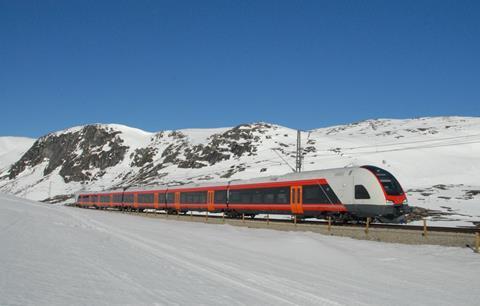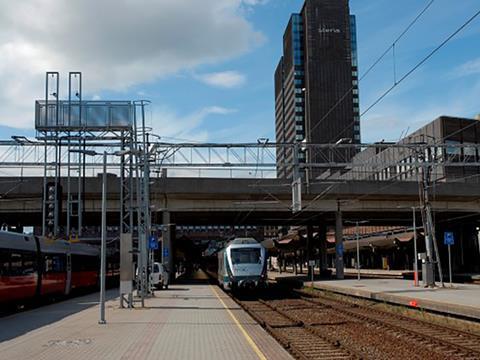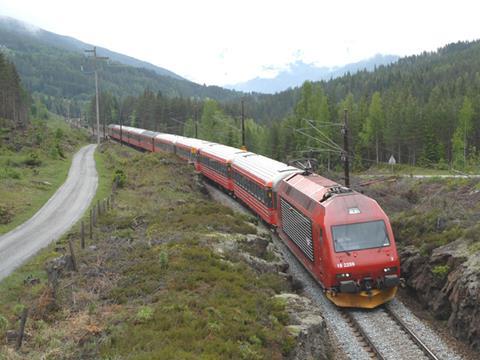
NORWAY: The recently elected Norwegian government intends to pursue an aggressive policy of investing in rail, with a view to driving modal shift, but plans to end the competitive tendering of passenger train operations and to simplify the structure of the country’s rail sector.
Setting out the new coalition’s policies on a wide range of economic and social topics on October 20, Labour leader Jonas Gahr Støre and Centre Party leader Trygve Slagsvold Vedum said they were looking to ‘review the corporate structure of the railways with a view to achieving a more holistic and comprehensive organisation’.
This review is expected result in a simpler organisation, with a clearer division of responsibilities between the Ministry of Transport & Communications, the national railway agency Jernbanedirektoratet and infrastructure manager Bane NOR.

End to competition
The new government intends to stop any further competitive tendering of passenger train operations, as well as the competitive outsourcing of infrastructure maintenance and emergency preparedness measures. Støre and Vedum said they planned to ‘enter into dialogue with the EU as soon as possible’, with the aim of securing an exemption from provisions in the market pillar of the Fourth Railway Package.
Under the railway reforms introduced in 2015, Jernbanedirektoratet has already awarded concessions to Go-Ahead for the operation of services on the Sørlandsbanen between Oslo and Stavanger (Lot 1) and to SJ Norge for the Dovrebanen and Nordlandsbanen main lines between Oslo, Trondheim and Bodø, as well connecting regional services (Lot 2). State-owned incumbent Vy Tog retained the Lot 3 Vest operating contract covering long-distance passenger services from Bergen to Voss, Myrdal and Oslo, and local services between Bergen and Arna.
Tendering of Lot 4 covering regional services around Oslo began in March, but bidding for the inter-regional Lot 5 was postponed for 12 months. While these competitions are expected to be halted, it is unclear whether the government would seek to end the concessions already awarded.

Investment to continue
Meanwhile, the new government says it intends to continue a high level of investment in the rail sector. The outgoing administration’s draft budget for 2022 envisaged spending of NKr31·8bn on rail, the same as in 2021.
Infrastructure priorities include additional double-tracking and more passing loops to facilitate enhanced services and more flexible operation, along with the alleviation of bottlenecks and repairs to ageing structures. This would allow improve frequencies and better performance. The plans also envisage continuing work on decarbonisation, with more electrification of diesel-worked lines or the use of alternative traction technologies to reduce emissions. Night train services are also to be improved.
Støre and Vedum confirmed that work would continue on the development of the long-planned North Norway line, with a ‘concept selection study’ to be completed in conjunction with the roll-out of the next National Transport Plan.

Reducing confusion
Responding to the government’s statement, Bane NOR CEO Gorm Frimannslund told local media that having fewer companies in the rail sector should ‘ensure a simpler everyday life for travellers’. In terms of industry structure, he felt that ‘today there is an unclear division of responsibilities and the sector is confusing. There is also a need for better co-ordination in the transport sector in general’. He said the administration’s priority should be to increase rail’s overall competitiveness against other modes.
Frimannslund felt that it was ‘very positive that the government platform explicitly mentions further development, and that they will pursue an offensive railway policy. We interpret this as increased investment in rail.’

















